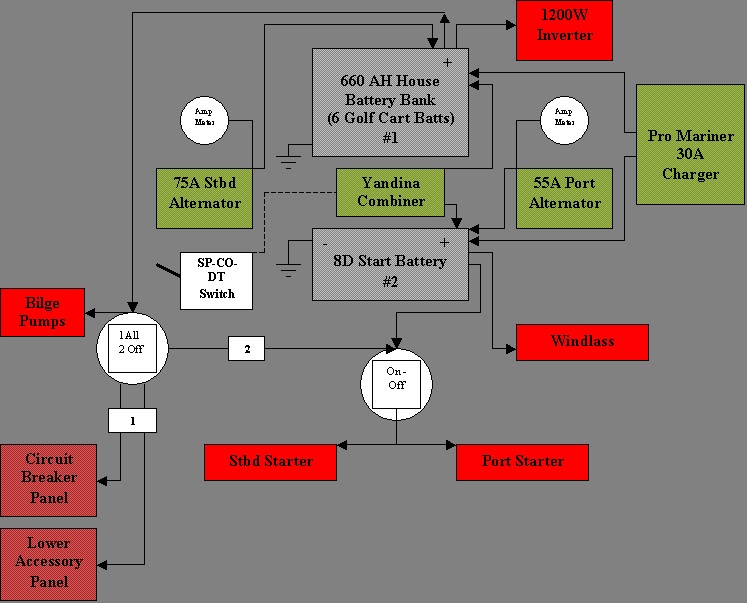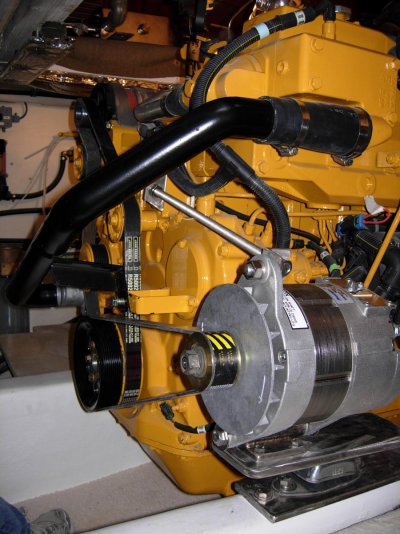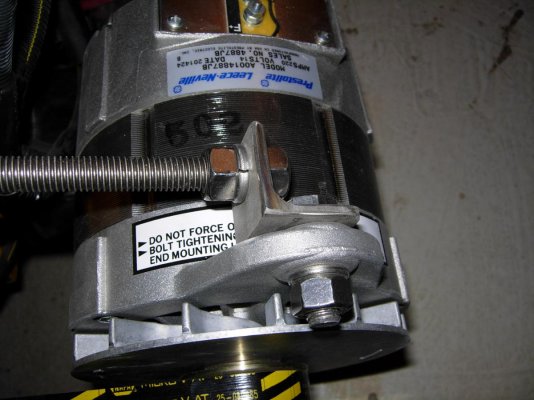And, conversely, if the bank isn't large enough, the additional capacity of a second alternator isn't necessary, even with an external VR.
But don't get me wrong -- I completely agree that a smart VR is best. I am really just responding to the idea that the second alternator is useless because the two alternators will fight each other (I think that myth was dispelled above), or because the VR won't allow one of the alternators to put out any current -- I believe it will, even with a dumb VR, so long as the batteries can absorb more current than the one alternator, alone, is putting out. So, in practical terms, put on two alternators if you think you may need that much current (and in that regard the focus should be on net output, ie, after subtracting current consumed by blowers, etc.), and use a smart VR if possible.






